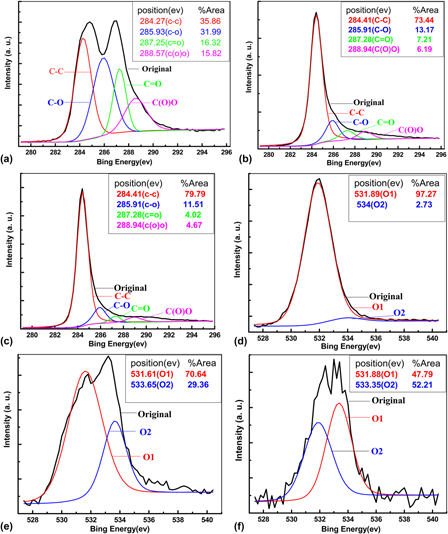Crossref Citations
This article has been cited by the following publications. This list is generated based on data provided by
Crossref.
Sengupta, Iman
Chakraborty, Samarshi
Talukdar, Monikangkana
Pal, Surjya K.
and
Chakraborty, Sudipto
2018.
Thermal reduction of graphene oxide: How temperature influences purity.
Journal of Materials Research,
Vol. 33,
Issue. 23,
p.
4113.
Sengupta, Iman
Sharat Kumar, Suddhapalli S.S.
Pal, Surjya K.
and
Chakraborty, Sudipto
2020.
Characterization of structural transformation of graphene oxide to reduced graphene oxide during thermal annealing.
Journal of Materials Research,
Vol. 35,
Issue. 9,
p.
1197.
Patil, Rahul
Patel, Harsh
Pillai, Sharad B.
Jha, Prafulla K.
Bahadur, Pratap
and
Tiwari, Sanjay
2020.
Influence of surface oxygen clusters upon molecular stacking of paclitaxel over graphene oxide sheets.
Materials Science and Engineering: C,
Vol. 116,
Issue. ,
p.
111232.
Santos, Marcos Alves
Marques, Lucas
and
Silva, Cecilia de Carvalho Castro
2020.
Purification of graphene oxide dispersions by using a fluidic cell.
Analytical Methods,
Vol. 12,
Issue. 28,
p.
3575.
da Silva, Luis Felipe
and
Lanças, Fernando Mauro
2020.
β‐Cyclodextrin coupled to graphene oxide supported on aminopropyl silica as a sorbent material for determination of isoflavones.
Journal of Separation Science,
Vol. 43,
Issue. 23,
p.
4347.
da Silva, Luis Felipe
Vargas Medina, Deyber Arley
and
Lanças, Fernando Mauro
2021.
Automated needle-sleeve based online hyphenation of solid-phase microextraction and liquid chromatography.
Talanta,
Vol. 221,
Issue. ,
p.
121608.
Ramamoorthy, Harihara
Buapan, Kanokwan
Chiawchan, Tinna
Thamkrongart, Krongtham
and
Somphonsane, Ratchanok
2021.
Exploration of the temperature-dependent correlations present in the structural, morphological and electrical properties of thermally reduced free-standing graphene oxide papers.
Journal of Materials Science,
Vol. 56,
Issue. 27,
p.
15134.
Darabut, Alina Madalina
Lobko, Yevheniia
Yakovlev, Yurii
Rodríguez, Miquel Gamón
Veltruská, Kateřina
Šmíd, Břetislav
Kúš, Peter
Nováková, Jaroslava
Dopita, Milan
Vorokhta, Maryna
Kopecký, Vladimír
Procházka, Marek
Matolínová, Iva
and
Matolín, Vladimír
2022.
Influence of thermal treatment on the structure and electrical conductivity of thermally expanded graphite.
Advanced Powder Technology,
Vol. 33,
Issue. 12,
p.
103884.
Thamkrongart, Krongtham
Ramamoorthy, Harihara
Buapan, Kanokwan
Chiawchan, Tinna
and
Somphonsane, Ratchanok
2022.
Investigation of the high-field transport, Joule-heating-driven conductivity improvement and low-field resistivity behaviour in lightly-reduced free-standing graphene oxide papers.
Journal of Physics D: Applied Physics,
Vol. 55,
Issue. 24,
p.
245103.
Dogan, Gokhan Mirza
Arbag, Huseyin
and
Koyuncu, Dilsad Dolunay Eslek
2022.
Effect of graphene-based additives on mechanical strength and microstructure of gypsum plaster.
Materials Today Communications,
Vol. 33,
Issue. ,
p.
104555.
Zhang, Yihui
Ji, Qianyu
Zhang, Jiacheng
Wang, Chengbao
Guo, Wenhua
Zhao, Jiyuan
and
Zi, Yanyang
2024.
Enhanced field emission performance of holey expanded graphite by heat treatment.
Vacuum,
Vol. 229,
Issue. ,
p.
113552.
Cong, Ruye
Jeong, Da-Eun
Jung, Ye-Yeong
Park, Hyun-Ho
Jeon, Jiyun
Lee, Hochun
and
Lee, Chang-Seop
2025.
Improved Self-Assembled Silicon-Based Graphite Composite Anodes for Commercially Viable High-Energy-Density Lithium-Ion Batteries.
Batteries,
Vol. 11,
Issue. 3,
p.
115.




